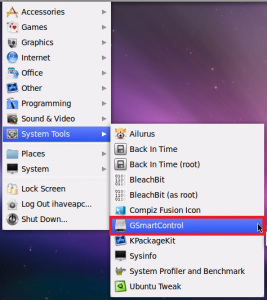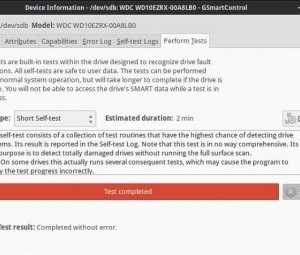
Vendor Specific SMART Attributes with Thresholds: Among the other things, we can see the status of various SMART parameters: SMART Attributes Data Structure revision number: 16 The command above produces a lot of output. Suppose we want to check the current status of the /dev/sda device we would run: $ sudo smartctl -a /dev/sda To get all the available SMART information about a storage device, we can launch the utility with the -a option (short for -all) and of course pass the path of the device we want to check as the last argument of the command. Smartctl 6.6 r4594 (local build)Ĭopyright (C) 2002-17, Bruce Allen, Christian Franke, = START OF ENABLE/DISABLE COMMANDS SECTION = What if we want to enable it? All we have to do is to run smartctl with the -s option, using “on” as argument: $ sudo smartctl -s on /dev/sda

From there we can see that the device has SMART capabilities and that, in this case, SMART support is disabled. What interests us the most, however is the content of the last two lines. We can see that basic information are displayed such as the device family, model, sector sizes, etc. SMART support is: Available - device has SMART capability. SATA Version is: SATA 3.0, 6.0 Gb/s (current: 3.0 Gb/s) Sector Sizes: 512 bytes logical, 4096 bytes physicalĭevice is: In smartctl database ĪTA Version is: ACS-2 (minor revision not indicated) The output of the command is the following: = START OF INFORMATION SECTION = To perform this operation we can run the smartctl utility with the -i option (short for -info): $ sudo smartctl -i /dev/sda The first thing we want to check is if S.M.A.R.T support is active on the device. Let’s become familiar with the smartctl utility. If Archlinux is your favorite distribution, you can use pacman: $ sudo pacman -S smartmontools
#LINUX DISK HEALTH INSTALL#
On recent versions of Red Hat Enterprise Linux, CentOS and Fedora we can use dnf: $ sudo dnf install smartmontools
#LINUX DISK HEALTH UPDATE#
If you are running on Debian or one of its derivatives, like Ubuntu or Mint, for example, you can run: $ sudo apt-get update & sudo apt-get install smartmontools $ – requires given linux-commands to be executed as a regular non-privileged userĪs mentioned before the smartmontools package is available in the repositories of all the major Linux distributions, therefore all we have to do to install it, is to use our favorite package manager. # – requires given linux-commands to be executed with root privileges either directly as a root user or by use of sudo command

The smartmontools package (see instructions)
#LINUX DISK HEALTH SOFTWARE#
Requirements, Conventions or Software Version Used Some of these commands need to be run sudo to get all info.How to check an hard drive health from the command line using smartctl Software requirements and conventions used Software Requirements and Linux Command Line Conventions Category

SATA Version is: SATA 3.0, 6.0 Gb/s (current: 6.0 Gb/s) Sector Sizes: 512 bytes logical, 4096 bytes physicalĭevice is: Not in smartctl database ĪTA Version is: ACS-2 (minor revision not indicated) If you are more interested into how the various partitions are associated with the mount points try lsblk which I often use as: lsblk -o "NAME,MAJ:MIN,RM,SIZE,RO,FSTYPE,MOUNTPOINT,UUID"Īnd finally smartctl -a /dev/yourdrive gives you detailed info like: = START OF INFORMATION SECTION = If you are looking for partitioning information you can use fdisk or parted.


 0 kommentar(er)
0 kommentar(er)
